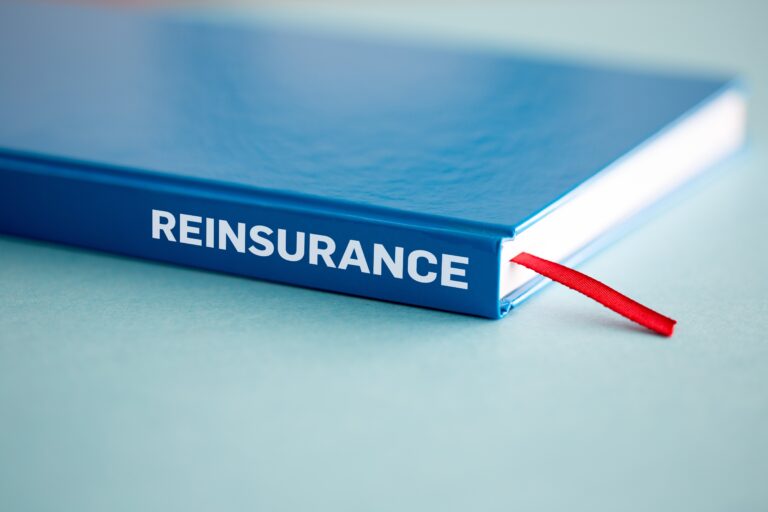
What is reinsurance?
Reinsurance is often referred to as insurance for insurance companies. It is a contract between a reinsurer and an insurer, in which the insurance company, known as the cedent, transfers risk to the reinsurance company. Under the contract the reinsurer assumes all or part of one or more insurance policies issued by the cedent.
Reinsurance contracts can be negotiated directly with a reinsurer or arranged through a reinsurance broker or other third-party intermediary.
Reinsurers may themselves also buy reinsurance protection, which is called retrocession. This is done to reduce risk and the impact of catastrophic loss events.
Why do insurers use reinsurance?
Reinsurance is an important tool insurance companies use to manage risks and the amount of capital they must hold to support those risks.
Reinsurance allows insurers to share some of their risks with other companies. This helps them avoid being overly exposed to a single large loss or a series of events such as natural disasters or other major claims.
In addition, it enables insurers to manage capital requirements, stabilise returns and increase their capacity to underwrite more policies.
One of the main tasks for insurance regulators is to ensure insurance companies remain solvent to be able to pay policy holders in an insurance event. To do this, regulators impose minimum risk-based capital requirements.
The insurance company holds excess capital in cash and low yield securities, while it waits for an insurance event to occur. This comes at a cost. Although interest rates have gone up, they may not generate investment returns typically expected by insurance investors.
Reinsurers, in turn, have more diversification opportunities. For instance, they can sell their capital and issue other types of securities, including catastrophe bonds and other securities into the international capital markets where there may be a lot more capacity.
By transferring some risk to reinsurers, insurance companies can reduce the amount of capital they need to hold in reserve.
This allows insurers to underwrite more or larger policies than they could on their own and increases their capacity to take on risk without breaching internal risk limits.
Reinsurance can also smooth out the insurer’s financial results over time by limiting the impact of large, infrequent losses. This stability is important for maintaining investor confidence and credit ratings.
Although it is not a primary driver, using reinsurance can improve the primary insurer’s tax position. This is because primary insurers expense their reinsurance premiums before they pay tax, while at the same time reinsurance will allow them to sell more policies.
Why would US insurers use overseas reinsurers?
While the US reinsurance sector continues to be an important source of capacity for domestic insurers, state insurance regulators have long recognised the need for both US and non-US reinsurance capacity to fulfil the needs of the US marketplace.
Consequently, the US has developed a system of reinsurance regulation that has led to the development of an open, but secure, reinsurance market where most of the reinsurance premiums are reinsured outside the country.
Private equity-backed life insurance companies, as part of their investment strategy, tend to cede a large percentage of their business to jurisdictions like Bermuda or the Cayman Islands where they are subject to different statutory accounting rules, tax rates and capital reserve requirements that may be advantageous to them.
What are US regulators doing to make sure using overseas reinsurance is safe?
Many offshore reinsurers are among the largest, oldest and financially strongest reinsurance companies and their capacity is critical to US ceding companies.
US regulators are focused on the ceding company that might be looking at the reinsurance arrangements. Their overriding concern is the solvency of the ceding company, the impact of reinsurance on the ceding company’s financial position, and ultimately the financial impact on consumers – the policyholders who buy the ceding company’s products.
Specifically, that the reinsurer can fulfil its financial obligations to the insurance company, in particular during times of stress and larger loss events.
Because a significant portion of the risk ceded by US-domiciled companies goes to reinsurers domiciled outside of the US, regulators apply a system of indirect reinsurance regulation to them.
This indirect regulation is mainly ensured through a statutory credit for reinsurance. The ceding company can record this as a reduction of liability in its financial statements.
As offshore reinsurers are effectively beyond the reach of US regulations, US statutory accounting rules and laws regarding credit for reinsurance have historically required that all amounts recoverable from what the regulators call ‘unauthorised reinsurers’ must be fully and properly collateralised.
This is done either through a letter of credit issued by a qualified US financial institution, or else in a trust account established in the US for the benefit of US ceding insurers, providing US insurers with much reduced counterparty risk.
Are there exceptions to these collateralisation requirements?
During the past 10 to 15 years there has been a whittling away of the collateralisation requirements beginning in 2011, when changes were made to the US model law and regulation.
It allowed the reinsurers to reduce these requirements. If they can meet certain conditions, they are deemed certified reinsurers operating in qualified jurisdictions.
In 2017, the US Treasury signed a covered agreement with European Union and in the following year with the UK, due to Brexit, which completely eliminates collateral requirements for reinsurers in these jurisdictions, if they meet certain solvency and capital thresholds.
The US then again changed its model law and regulation that was adopted by states and territories by September 2022. The changescreated reciprocal jurisdiction status for countries or jurisdictions that did not sign a covered agreement, such as Bermuda, Japan and Switzerland.
As a result, there are 90 approved reciprocal jurisdiction reinsurers, as of April 2025, which allows them to post reduced collateral in reinsurance transactions with the United States.
Does the Cayman Islands have reciprocal jurisdiction status?
No, but the Cayman Islands is pursuing reciprocal jurisdiction status with the US National Association of Insurance Commissioners (NAIC).
This NAIC equivalency will increasingly align reinsurance regulation on island with the US insurance and reinsurance framework.
The Cayman Islands Monetary Authority has said the timeline is still undefined and it will require some time and commitment from the Authority.
CIMA confirmed that, if gained, the qualified jurisdiction status will only cover the Class D reinsurers – those with local offices – in Cayman’s reinsurance sector. These reinsurers would also ultimately have to individually apply to be recognised under the US regime.


